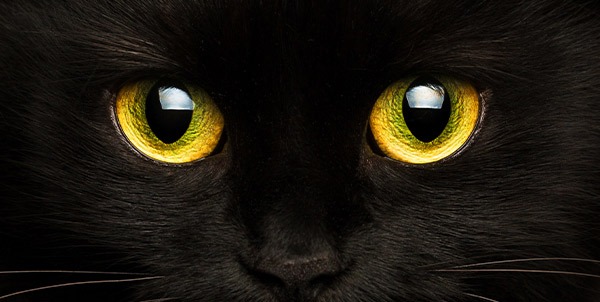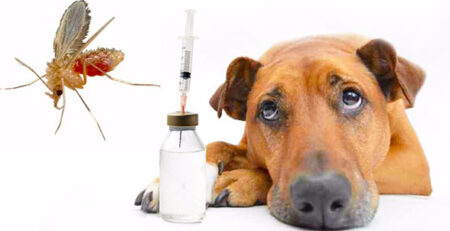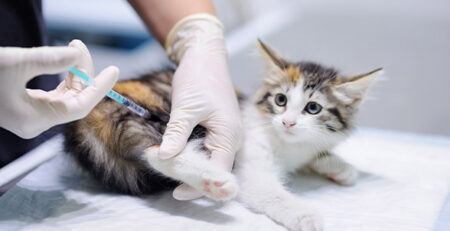Table of Contents
Sight is among the characteristics that make animals special. But how do they see dogs and cats?
Have you ever noticed the effect of photographing a cat with a flash?
The eyes become bright, just like the high beam headlights of a car.
This aspect of vision that is so astonishing has its own scientific and rational explanation.
The reason for this phenomenon is due to the presence of the tapetum lucidum with which dogs and cats, but not humans, are endowed.
Do you know what tapetum lucidum is?
The
tapetum lucidum
is a thin layer placed within or immediately behind the retina and has reflective properties.
It reflects light entering the eye and sends it back to the retina.
This increases the light stimulus, and the cat or cat perfectly perceives the images even during the night.
The eyesight of animals and humans, therefore, are very different, but in both cases, the function of the eye is the same.
How does vision work?
The cornea and lens function like the lens of a camera: they capture images and bring them into focus.
When light enters the eye, it passes through the pupil to the back of the eye.
Light, electrical stimulus and images
Cones and rods in the retina capture light and convert it into electricity that propagates along the optic nerve.
Once it reaches the brain, the electrical stimulus that has passed through the two optic nerves is transformed into an image.
However, humans, dogs and cats perceive images differently.
The differences in cat and dog vision
The dog and cat differ mainly in their ability to modulate light and detect colors.
Dogs do not recognize colors but see well in dim light, cats see better in darkness, while during the day their vision loses some potential.
What are the reasons for these differences?
Dogs and cats are predatory animals.
Predators’ eyesight is developed in such a way as to enable them to locate prey in any light condition.
Predators at birth have sealed eyes, and the development of their vision is completed a few weeks after birth.
Nothing happens by chance in Nature
.
A blind pup does not have the ability to move around, so it will remain safe and hidden until its mother returns when she leaves to hunt.
On the contrary, prey are born already standing upright and with their eyes open, to be ready to flee from the earliest days of life in case of danger.
The eyes are positioned centrally to the face: this allows predators to focus on a specific point in their wide field of vision, which can reach 270°.
A view that allows distances to be assessed.
Predators’ eyes are also able to assess the distance between them and prey and instantly sense their every slightest movement.
Predators are able to see well during both day and night, due to the presence of more rods
Dogs and cats have more rods than cones
In the cat, the rods reach as many as 200 million, while in humans there are “only” 120 million.
Precisely because they have more rods than cones, they cannot perceive the same range of colors as our eyes.
What colors do dogs and cats see?
The dog can distinctly perceive blue-violet and yellow.
It recognizes all shades from red to orange to green exclusively as different from white, but confuses them with yellow.
All other colors are not perceived.
The cat, on the other hand, is able to see as many as 3 colors distinctly, namely blue-violet, yellow and also green but does not perceive red.
Eye diseases: don’t underestimate them
Dogs and cats can also suffer from eye diseases: cataracts, conjunctivitis and ulcers are the most common.
If the case requires it, get a specialist consultation now
Eye diseases should not be considered a secondary problem.
Preserve your dog or cat’s vision through constant checkups, and if you notice tearing, opacity of the eye, redness, swelling or itching, run to your trusted veterinarian immediately.
Book regular check-ups for your dog or cat at La Veterinaria Clinic: our staff doctors are always available to you.
La Veterinaria Clinic is always open, every day including holidays, and with First Aid service from 8 pm to 8 am.
For the joy of seeing them HAPPY.











